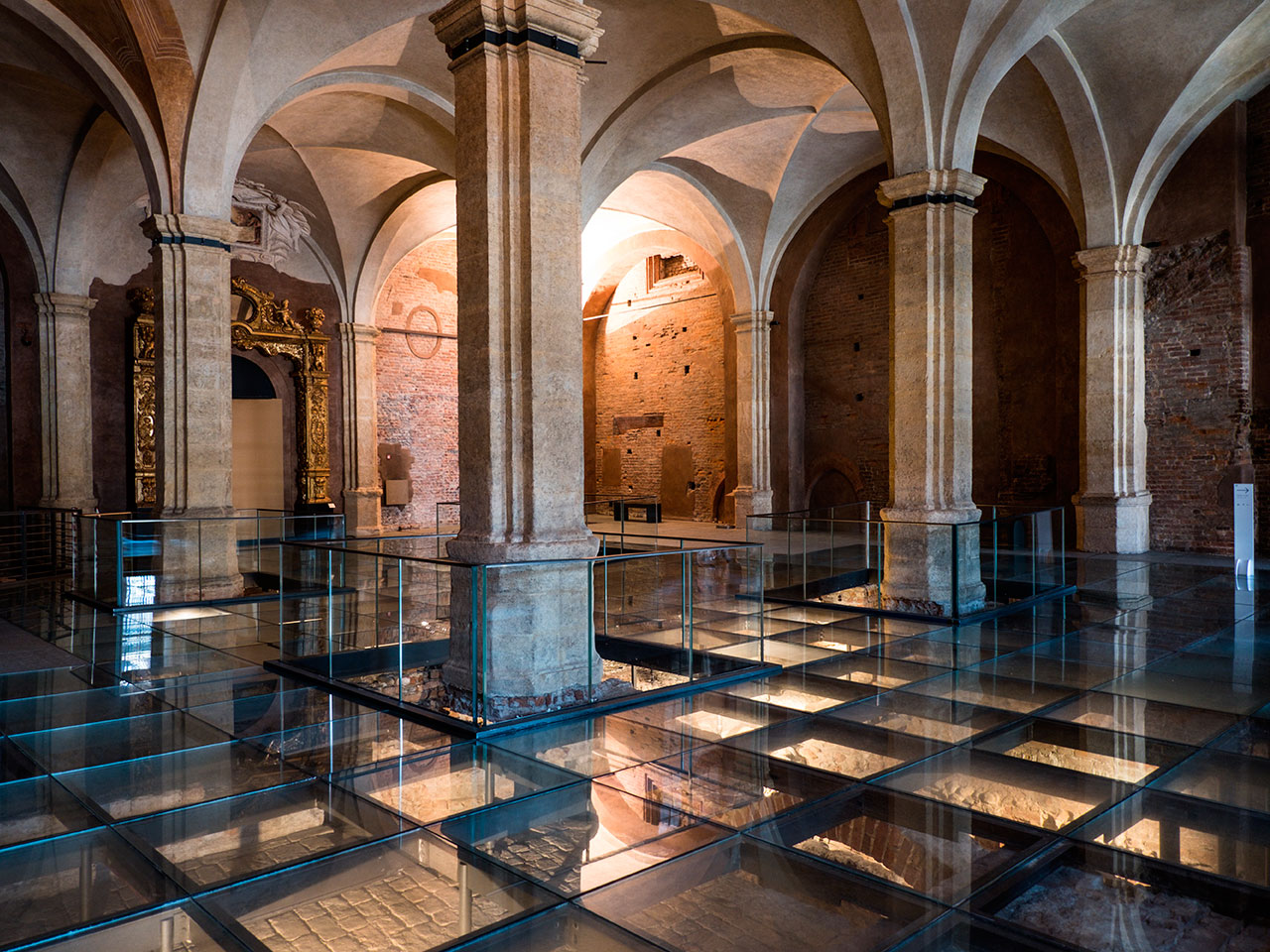The appointment at the Museum develops into an exploratory journey of the building from its Roman origins to the present day, passing through its Baroque and 19th century transformations. Walking up the stairs of the Panorama Tower, you'll enjoy a unique view of the city and finish among the decorations, carvings and gilding of the ducal flats up to the luminous staircase designed by architect Filippo Juvarra. Along the way, hundreds of works retracing the art and centuries of history not only of the Palace but also of Italian and international culture and tradition: 14th-century wooden furnishings from religious buildings in northern Italy and France, altarpieces, paintings by the most important Italian and European artists (including Antonello da Messina's self-portrait), glass and porcelain from the most significant Italian productions of the 18th and 19th centuries.
Guided tour allowed with a minimum of 2 participants.
By plane:
Turin Caselle International Airport is about 15 km from the centre. Connections to the city are provided by a shuttle bus service, with final destination the Porta Nuova railway station, which operates from 5:15 a.m. to 11:15 p.m. (journey time: approximately 40 minutes). The Torino Dora railway station can also be reached by train from the Caselle Aeroporto station (Turin-Ceres route) in 20 minutes with runs every half hour from 05:00 to 22:00. The airport also has an efficient car rental service.
By train:
Turin is a major national and international railway hub and has four railway stations: Porta Nuova, Porta Susa, Lingotto and Dora. At the main stations: Porta Nuova and Porta Susa, trains arrive from major Italian cities. The TGV to France also stops at Porta Susa.
By bus:
Departures of Italian and international bus lines take place from the terminals in Corso Inghilterra and from the Piazzale in front of the Porta Nuova and Porta Susa stations.
By car and motorbike:
Turin is at the crossroads of five motorways: the A21 Turin-Piacenza, the A4 Turin-Milan, the A6 Turin-Savona, the A32 Turin-Frejus-France and the A5 Turin-Ivrea. A dense network of state roads ensures connections with other cities in northern Italy and with the crossings to France.
Indicative road distances to Turin: from Milan 140 km; from Genoa 170 km; from Bologna 332 km; from Florence 395 km; from Rome 680 km. and from Venice 400 km.

Situated in the heart of the city, the building has a long history as witnessed by its various architectural parts. From an ancient Roman gateway, it was acquired in the 13th century by the Marquises of Monferrato and later by the Dukes of Savoy, thus becoming a residence and setting for festivities and weddings. It was with Christine of France and Marie Jeanne Baptiste Savoy Nemours (the two Madame Royals, i.e. regents in favour of their children under age) that the building took on the appearance of an elegant residence, particularly at the behest of the second Madame Royale, thanks to the interventions of the architect Filippo Juvarra who codified its definitive monumental appearance. Today, Palazzo Madama, a Unesco World Heritage Site, houses numerous collections and works of art, mostly donations to the city of Turin and dating back to different historical periods: from medieval and Gothic art to great altarpieces, including Gaudenzio Ferrari and, not to be forgotten, the portrait of an unknown person by Antonello da Messina, the very icon of the Museum. On the upper floors, the tour continues in the Baroque rooms and among the refined collections of miniatures, glass and porcelain. Not to be missed is the viewing tower and, on the ground floor, the garden created by the study of period documents and miniatures.